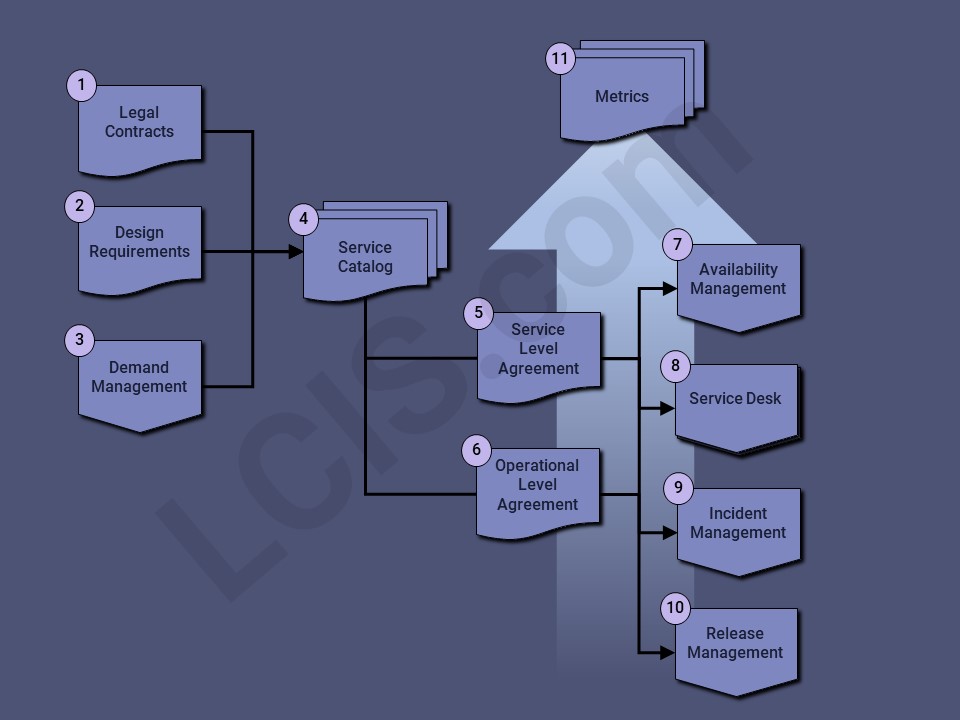Service Level Management
Service Level Management allows organizations to manage the Service Catalog, including Service Level Agreements (SLAs) and Operational Level Agreements (OLAs) which document agreed-upon response times, thresholds, escalation paths, etc.

- Legal contracts with vendors, business partners, and customers often provide the basis of Service and Operational Level Agreements, specifying the contractual commitments to the health and maintenance of a service.
- Design and requirements documents are also key in defining the utility and warranty of a service, specifying the expected workflow and outcomes.
- A Demand Management system allows organizations to prioritize new service development, including new services, enhancement requests and regulatory changes.
- The Service Catalog consists of current offered services with required documentation, including approved SLAs and OLAs.
- The Service Level Agreement (SLA) details the end-to-end plan for operating the service, including responsible teams, Configuration Items (CIs), and special considerations for Early Life Support (the period immediately following a major release).
- The Operational Level Agreement (OLA) details the agreements between internal teams, vendors, and business partners required for the service to operate within the SLA. This agreement may include workflow and escalation protocols.
- Availability Management is informed by the performance and availability thresholds and maintenance windows defined in the SLA.
- The Service Desk commitment to the service and workflow instructions are documented in the SLA and/or OLA.
- Incident Management of the service is detailed in the SLA and/or OLA, including target response and resolution times.
- Release Management is informed by the SLA, including the authorized maintenance windows when releases are allowed to be deployed.
- Key Metrics, including Availability, Incident SLA performance, and Service Transition performance are made possible by this process.